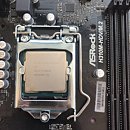- Joined
- Oct 9, 2007
- Messages
- 47,453 (7.50/day)
- Location
- Hyderabad, India
| System Name | RBMK-1000 |
|---|---|
| Processor | AMD Ryzen 7 5700G |
| Motherboard | ASUS ROG Strix B450-E Gaming |
| Cooling | DeepCool Gammax L240 V2 |
| Memory | 2x 8GB G.Skill Sniper X |
| Video Card(s) | Palit GeForce RTX 2080 SUPER GameRock |
| Storage | Western Digital Black NVMe 512GB |
| Display(s) | BenQ 1440p 60 Hz 27-inch |
| Case | Corsair Carbide 100R |
| Audio Device(s) | ASUS SupremeFX S1220A |
| Power Supply | Cooler Master MWE Gold 650W |
| Mouse | ASUS ROG Strix Impact |
| Keyboard | Gamdias Hermes E2 |
| Software | Windows 11 Pro |
Intel succeeded in bringing down the TDP of its 8-core/16-thread "Coffee Lake-Refresh" silicon all the way down to a staggering 35 W, from its currently rated 95 W, which in real-world usage easily exceeds 110 W, given Turbo Boost, and other performance enhancements enabled by DIY motherboards. The new Core i9-9900T achieves its TDP with a combination of significantly lower clock-speeds, and an aggressive on-die power-management system. Its nominal-clock is down to 1.70 GHz from 3.60 GHz of the original i9-9900K, while 1~2 core Turbo Boost frequency is down to 3.80 GHz from 5.00 GHz of the original. The all-core Turbo clock-speed could be as low as 3.30 GHz. Intel hasn't tinkered with the L3 cache amount, which is still set at 16 MB, and the UHD 630 iGPU retains its EU count and clock-speeds. The chip features its 4-character product code of QQC0.

View at TechPowerUp Main Site

View at TechPowerUp Main Site









